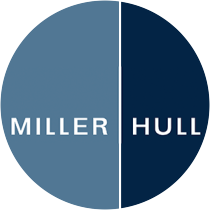- Project uploaded by Alex Zink on 04-05-2023
- Project last updated by Ben Epp on 03-13-2025
Central Library at Stevens Ranch
Bend, ORA library means something different to everyone. For some, it’s a place to do research. Others come to read in peace — to write, to code, to collaborate. The new Central Library at Stevens Ranch will acknowledge these different user groups and will accordingly make a point to welcome them all. With spaces that speak to the young, old, studious, and synergistic, the Central Library will indeed be a place for everyone.
With mass timber occupying a lower carbon footprint than concrete or steel, the design team aspired to maximize the use of wood in this 100,000-square-foot building. This ambitious act aided in our selection of Type III-A construction, a construction type that permits building with wood if it’s one-hour fire protected.
Acoustic dowel-laminated timber (ADLT) is also used for the floor deck system which measures eight feet wide by 40 feet long, a size that creates enough support and mass to forgo the slab of concrete that is typically needed with steel or concrete to prevent seismic racking of the columns that separate floors. With ADLT, the system can perform structurally as flooring, architecturally as a finish material, and acoustically as a sound-absorbing feature. With an additional sustainable benefit, the acoustic material routed into the ADLT floor and roof decks for sound absorption removes the need for the harsh materials that are typical with acoustic insulation.
The structural layout with a 12-foot bay and length of the building results in a distinct directionality of the building, almost like the ribs of a ship. This resulted in an overall structural efficiency with beams running east/west, which also provides long spans for open, column-free, and flexible library spaces. This is counter to the floor decks, which span only in the north-south direction. A regular 12-foot structural bay resulted in the efficient use of 2x8 ADLT for all floor decks and 2x6 ADLT at the roof deck.
A raised access floor system allowed our design team to coordinate mechanical systems, electrical conduit, and fire sprinklers below the floor within the access floor, reducing the number of exposed systems thereby leaving the ceiling, columns, and beams to be the primary expression of the building, clutter-free, and with an immaculately warm wood interior enabled by the exposed ceiling finish. The strategic use of concrete core walls at the center bay of the building also provides the building with shear (a structural wall that withstands seismic instability) which eliminates the need for the steel diagonal braced frames common in other mass timber buildings. This resulted in a more consistent expression of the wood columns and beams as the expressed structural system of the building. Column-to-beam connections remain clean, as well, as the custom-designed connections are concealed inside the wood structure.
Project Details
-
Year Built
2026
-
Number Of Stories
3
-
Bldg system
Mass Timber
-
Sq. Meters
9,290
-
Construction Type:
III-A
-
Building Type:
Institutional
-
Material Types:
Mass Timber
Dowel-Laminated Timber (DLT)
Glue-Laminated Timber (GLT or glulam)
Timber-Frame / Post and Beam
Hybrid (wood with steel or concrete)
Project Team
-
DowelLam Dowel Laminated Timber
-
KPFF Consulting Engineers Structural Engineer
-
Miller Hull Partnership Design Architect
-
StructureCraft Dowel Laminated Timber
-
TGC Structural Estimator, Project Manager
-
Alex Zink Architect
-
Akshay Srinivas Designer
-
Darek Olson Designer
-
Erik Kabusreiter Structural Engineer
-
Garrett Nelli Architect
-
Jennifer Stormont Interior Designer
-
Jingxian Xu Designer
-
John MacKay Architect
-
Julia Edwards Designer
-
Kelly Dixon Contractor
-
Kirby Nagelhout Construction Company Construction Manager
-
Kirk Blakley Designer
-
Libby McCarl Interior Designer
-
Lindsay Koski Designer
-
Maaike Post Architect
-
Mark Tobin Structural Engineer
-
Mathew Albores Project Manager
-
Mike Taylor Contractor
-
Ruth Baleiko Design Lead
-
Sian Roberts Partner in Charge
-
Steel Associates Architects Local Architect
-
Tania Rogel Designer



 WOODWORKS
INNOVATION
NETWORK
WOODWORKS
INNOVATION
NETWORK










